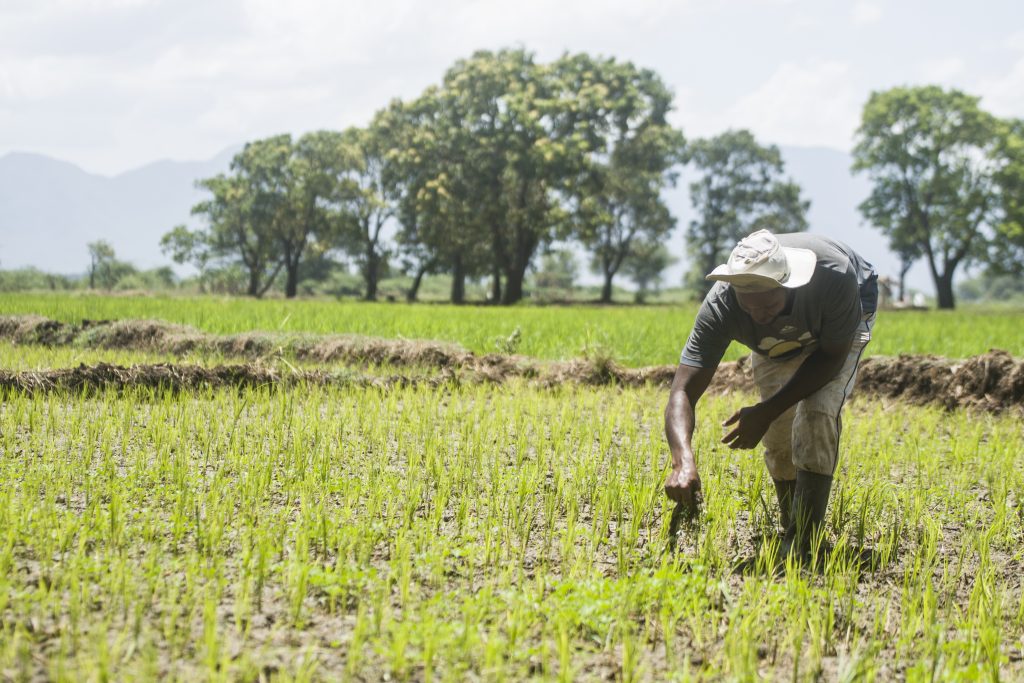We will now visit a farm in Tanzania to hear about how they have been lobbying the government for additional support for the irrigation scheme they initiated.
The Location
The Mawala irrigation scheme lies in Kahe ward, 12km southeast of Moshi town, in the Kilimanjaro region of northern Tanzania. The area is part of the Pangani River Basin, and falls within the Northern Irrigation Zone. Mawala is one of three villages that up the Mawala irrigation scheme.

The Context
The mean annual precipitation is 365mm, with most rain occurring between March and May. Agriculture is the main source of income for most villagers.
The ward has a long history of irrigation development by farmers, companies and the government. The Mawala irrigation scheme has its origins in 1968, when the government (supported by the Food and Agricultural Organisation) started constructing a canal from the Miwaleni spring to irrigate land. Originally, the Kahe scheme was meant to be a village scheme, operated by smallholder farmers who grew both food and cash crops. However, in an attempt to save money, the government handed the project over to a private company and later the estate moved into the National Agriculture and Food Corporation’s (NAFCO) hands. Under NAFCO about half the former estate was given to the village authorities to distribute amongst the farmers. In 1999, the NAFCO estate was privatised. This has resulted in the current situation, whereby water from Milaweni spring flows through the NAFCO canal to the pumping station of a private sugar estate. What remains flows downstream to the Mawala irrigation scheme.
Recent Developments
Most infrastructure in the Mawala irrigation scheme is made and maintained by farmers themselves. The canals are dug by hand and, as they are cleaned, become deeper over time, with many canals now below field level, making irrigation difficult. Farmers use temporary structures (such as bags, grass and mud) in an attempt to raise the water level. Some canals (including Raymond’s canal at Bomba Tatu – see below) do not have a way of closing or opening their intake, making water division more difficult.
Farmer-led Irrigation Development
The initial water group has been transformed into an irrigation cooperative, called the Ongama, which collects water fees to pay for the water-use permit. Water division is organised at canal level, and the system varies from canal to canal. Ongama organised the cleaning of the canal.
In some canals, farmers have collected money and built structures to improve their canals but they cannot upgrade the whole system because of insufficient funds.
After initially obtaining their water rights in 1997, farmers from Mawala asked for support to survey the scheme and estimate the costs for division boxes. Letters with requests for support have been sent to different government offices with varying levels of success.
Raymond is a farmer from Mawala village in Tanzania. He is part of a large group of farmers who have worked together to dig irrigation canals, maintain them and manage water allocation.
English subtitles can be turned on for the below video.
Before this construction was started, the prime minister visited this place. This was the time of Prime Minister Mizengo Pinda. During his visit he came to the place called Bomba Tatu. At that time there were only three culverts. When he saw how the place was, and we further explained to him about the challenges we were facing, he told us to wait and he would take the matter to the government and request a construction project. After he left, a water trench started to be built.
The construction was done in phases whenever the government got money. It would be channelled to build the irrigation system from one phase to another. We are still hopeful of more money and we shall continue to build more canals channelling water onto the farms.
Risks of government intervention in farmer-led irrigation development
Although Mawala farmers say they are happy with the support they have received, there are some general challenges with government interventions in farmer-led irrigation development areas:
- Farmers might stop investing, as they now consider themselves a government scheme or because they do not want to do anything that does not match the government’s vision for the area.
- Public or donor funding is often already earmarked for specific interventions (such as infrastructural upgrades) and can therefore not necessarily address the most pressing needs of farmers (for instance better market access or better extension services), resulting in sub-optimal results.
- Infrastructural projects often come with the requirement to make a formal organisation for its management (such as an irrigators association or a water users association). This can undermine existing organisation set up by the farmers themselves.
- The influx of money for infrastructural projects can lead to division with a community as some benefit whilst others do not.
Kahe Ward, TanzaniaIf you would like to read more on farmer-led irrigation in Tanzania, and Kahe ward in particular, then research led and conducted by Chris de Bont, Stockholm University provides more detail. |
Key messages:
|
Acknowledgements:
- Chris de Bont, Stockholm University, Sweden
- Phil Woodhouse, Phil Woodhouse, Global Development Institute, The University of Manchester
- Raymond, Farmer, Kahe, Tanzania
